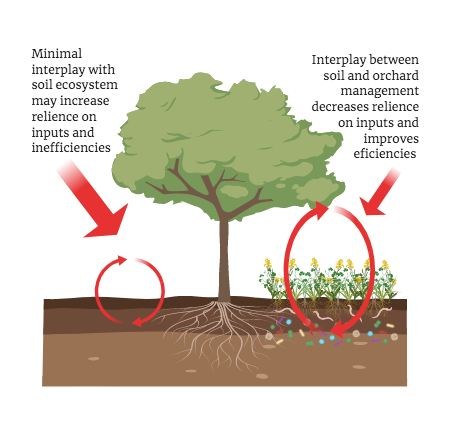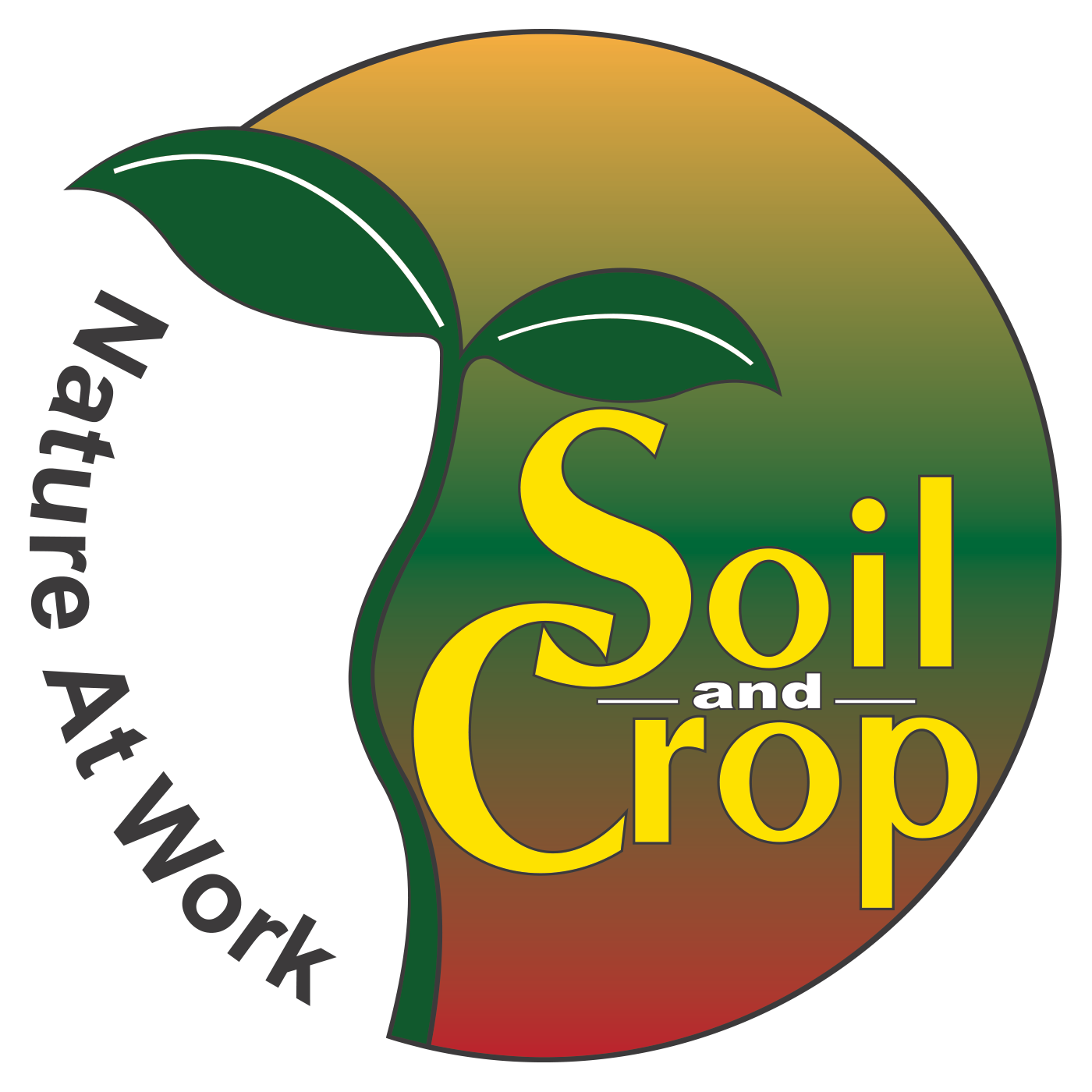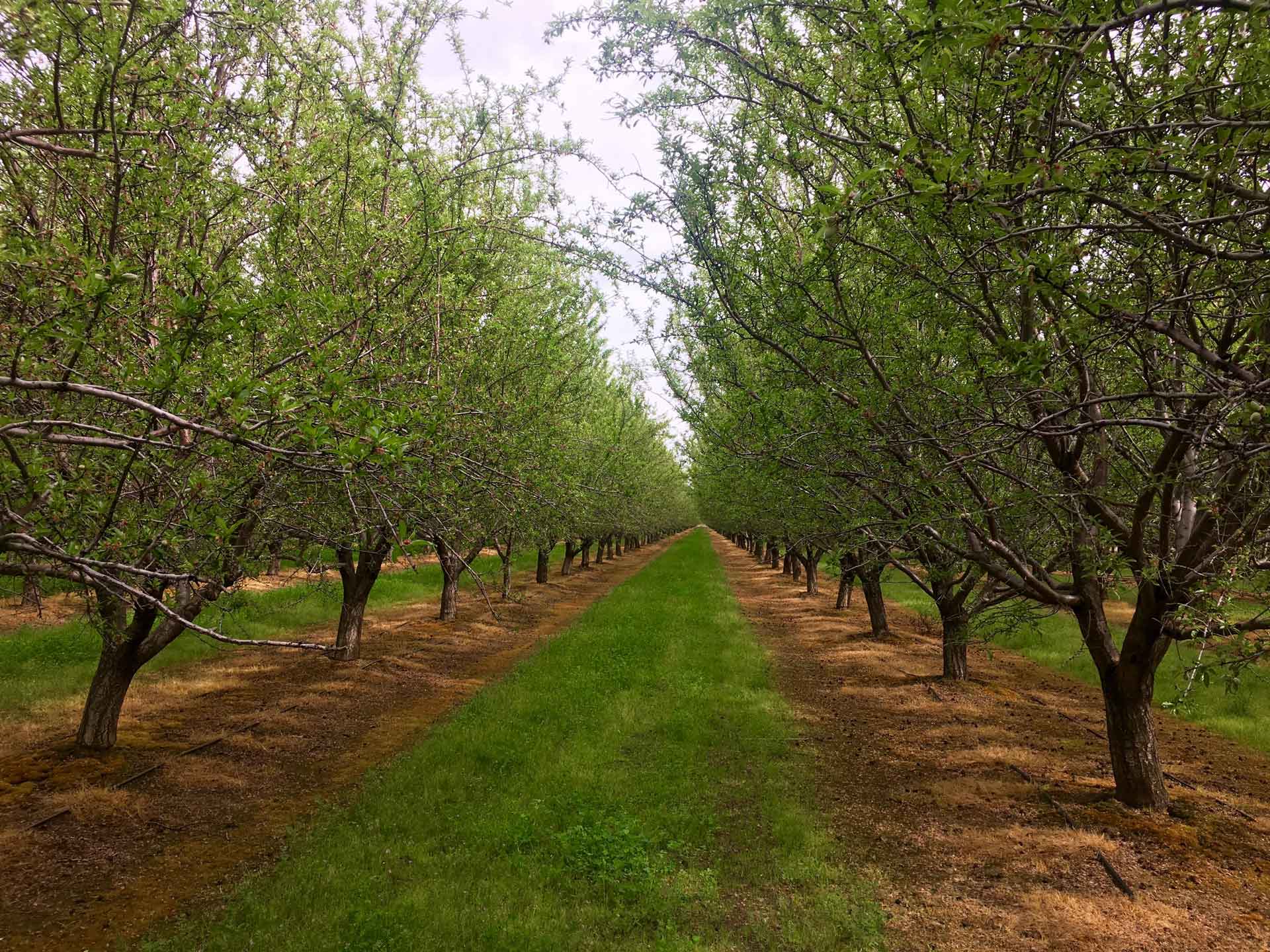Researchers who are exploring this relationship are finding that mycorrhizal fungi are a vital part of ecosystem health around the world—not only in less intensively managed ecosystems but in agricultural landscapes as well.
Mycorrhizal Fungi
Mycorrhizal fungi colonize the root system of a host plant to form a symbiotic relationship and assist with water and nutrient acquisition. In return, the plant provides the fungus with energy in the form of carbohydrates, or sugars. In addition, these microscopic fungi may also play an important role in minimizing the impacts of stress and disease on plant hosts.
Mycorrhizae exist as microscopic threads called hyphae and, when bunched together in a mass, form a net-like structure called mycelium that continues to grow and explore the soil. The mycelium of a single mycorrhizae can extend out to connect multiple plants or connect with other mycorrhizae to form a huge underground web called a common mycorrhizal network. As these networks extend throughout the soil, they start to play a role in supporting important agricultural services related to soil structural maintenance, water dynamics, nutrient cycling, and disease suppression.
Fungal Hyphae
Plant roots can gain access to soil water and nutrients via associations with mycorrhizal fungi through direct links between root and fungal cells. Roots need to be in direct contact with soil to access water and nutrients and, in some cases, can be restricted because of compacted soil conditions. Fungal hyphae, which are much smaller than plant roots, can improve access to soil nutrients and water for plants by exploring more extensively throughout the soil profile and obtaining nutrients and water from smaller soil aggregates. In fact, Plants with mycorrhizal colonization have 50-100 times more nutrient reserves available than a non-colonized plant. Fungi also decompose more complex organic compounds that are then made available in simpler forms to other soil organisms, such as microbes, that perform additional services. Mycorrhizal fungi thus play an invaluable role in supporting plant health and growth, both of which are essential to agricultural productivity.
Impacts to Soil Health
Although mycorrhizal fungi play an important role in both maintaining soil structure and improving plant health and growth, agricultural activities—including tillage, nutrient applications, fumigants, and anaerobic soil conditions—can significantly impact overall soil health and the fungal communities that rely on good soil conditions. This ultimately impacts the fungal community’s ability to provide the services with which crops rely on. Given that most crops can form associations with mycorrhizal fungi and that there are many benefits of interest for agricultural productions, it is imperative that we better understand how to create soil environments that support fungal communities and services.

As the importance of microbial communities, including fungi, have become an increasingly popular topic in agriculture, focus has turned to how management of our soils and crops impacts the soil ecosystem and, subsequently, the capacity for the soil to provide ecological and production benefits. University of California, Davis, plant sciences researchers Amélie Gaudin and Astrid Volder, have been investigating the nature of the symbiotic connection between mycorrhizal fungi and almond tree roots to determine the potential of mycorrhizal fungi inoculation to reduce water stress.
Soil Health Building Principles
A University of California (UC) Davis graduate student, Krista Marshall, who is working with Dr. Gaudin, said soil health building principles aim to minimize soil disturbance, maximize organic inputs, increase the amount of living roots and soil cover, and improve farm scale biodiversity are increasingly being incorporated into management as a means to foster more sustainable, resilient, and productive agricultural systems.
Management practices that recognize the importance of soil health have shown potential to improve services such as water conservation, nutrient use efficiency and yields while reducing soil erosion and leaching potential and improving soil organic matter and biodiversity—most of which are underpinned by the microbial communities that exist in the soil.
Research
Marshall is currently working on a research project surveying 13 orchard blocks that represent a diversity of practices to better understand how soil management impacts microbial community characteristics and the services mentioned above. Healthy soils are indispensible to microbial communities, including mycorrhizal fungi, and should be a consideration in orchard management decision-making, Marshall said. “It’s like a domino effect: the healthier the soil, the better the conditions for hosting more robust and diverse microbial communities, the more potential there is for better functioning and provision of agricultural services for crop productivity and sustainability.”
Mycorrhizal Inoculations
Mycorrhizal inoculations—which are quickly becoming of interest across the agricultural community—are being explored as a means to reap the benefits of the symbiotic associations between fungi and plants. The active components in the inoculum are mycorrhizal fungi propagules in the form of spores and colonized root fragments. When one of these colonizing units touches or comes into very close proximity with living root tissue, they are activated by minute amounts of specialized root exudates and begin the colonization process.
Growers who interested in using mycorrhizal inoculants in their production systems need to evaluate the current need for an inoculation as well as the soil health status of their orchard. It is also helpful to work with extension advisors or commercial suppliers and others who are familiar with mycorrhizal fungi to make sure cultural and management changes can improve the current mycorrhizal status or whether inoculation is warranted.
If use of an inoculant is warranted, the next step is to assess the different products on the market. Aspects of the products to consider include:
- Purpose of the product and how to use it
- Content of the product including specific species
- Guarantee of a pathogen-free content
- Mycorrhizal effectiveness in a standard test
- Maximum dilution of content
- How to store
- Recommended date of use
The inoculum products can be tested on a small scale using non-inoculated plants as a comparison.
The use of commercial inoculants are being presented as a means to more quickly and effectively restore mycorrhizal populations. However, Marshall points out that, “there is no definitive research suggesting that these inoculants are effective and management should aim to improve the soil ecosystem in which these microbial communities live”. To a similar effect, Carolyn Scagel from the United States Department of Agriculture (USDA)/Agricultural Research Service(ARS)/Horticultural Crops Research Laboratory in Corvallis, Oregon, suggests that mycorrhizae present in the soil, or applied as an inoculant, will not solve all production problems. Excessive tillage, fumigant applications, or nutrient imbalances can greatly affect microbial communities and activity in the soil. For example, USDA/ARS research shows that compost, compost teas, no-till, humates, seaweed extracts and fish fertilizers, in diverse and various ways, increase microbial activity in soil. Therefore, if growers are interested in using these inoculants or improving the native microbial populations present in their soil, they must also utilize practices that improve orchard soil health.


Leave a Reply